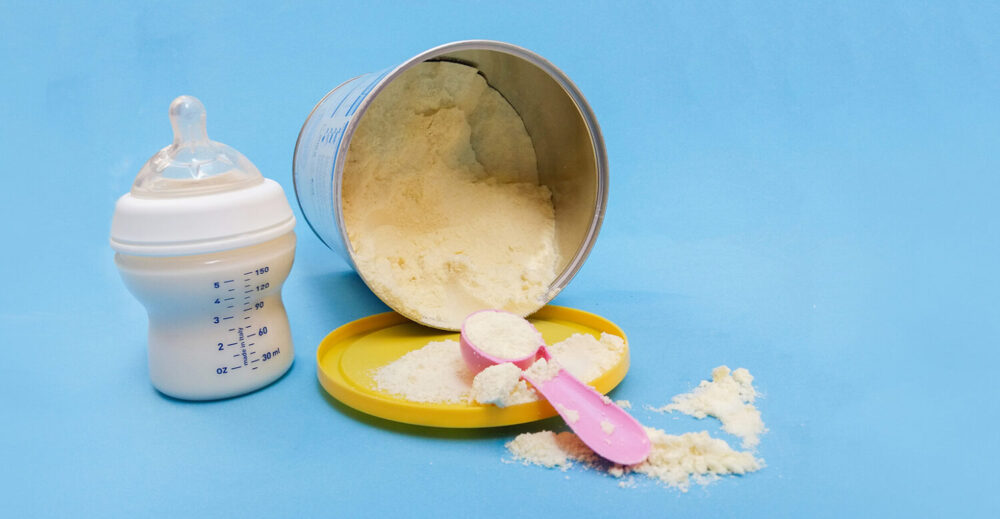
Infant formula or baby formula is a manufactured food intended for babies under 12 months of age. The composition of the baby formula is similar to that of mothers’ milk. In the USA, manufacturers have to follow the Food and Drug Administration (FDA) guidelines for the production of formulas.
Preparing the Formula
It is important to be careful about the preparation of the formula. Make sure that the formula is of the right kind for your child, is within the expiration date, and the container is not damaged. According to https://sellformula.com/, you don’t have to switch to another formula as they get older as long as the one you’re using is safe to use from birth. Here are our thoughts on the safe handling of infant formula.
Steps in Preparing the Formula
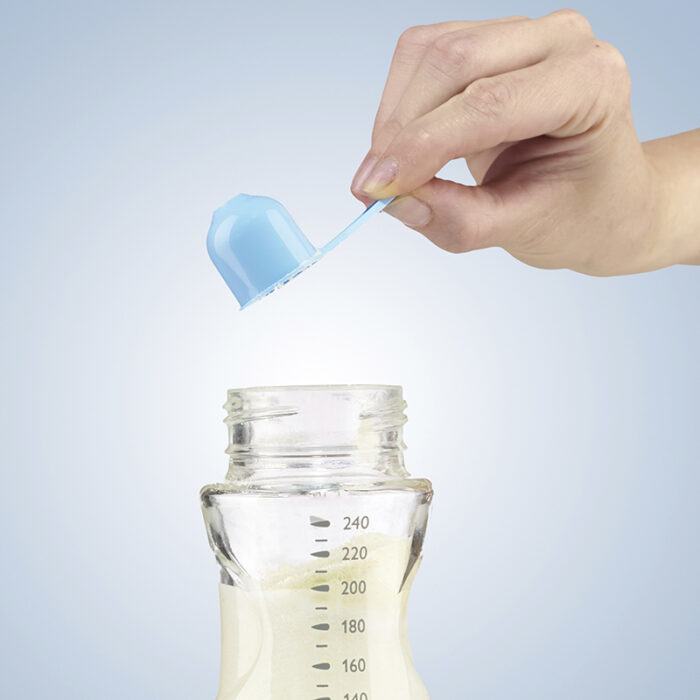
Follow these steps to prevent germs from contaminating the baby formula.
Wash Your Hands
Wash your hands with soap and water and dry them before you begin. Also, clean the area where you will be preparing the formula.
Prepare the Bottle
Bottles, caps, rings, and nipples need to be cleaned and sterilized before use. It helps in removing dangerous bacteria that could grow in the bottle. Bottles and accessories can be sterilized using a stand-alone electric sterilizer or by boiling them in a pan of water for five minutes.
You can follow these steps to sterilize the bottles in a pan:
- Step 1: Wash the bottle with soap and water.
- Step 2: Fill a large pan with water. Place the bottle and accessories in the pan, making sure that they are completely covered with water.
- Step 3: Bring the pan to a rolling boil, covered with a lid. Ensure that the pan doesn’t really come to a complete boil.
- Step 4: Cover the pan until the bottles and other equipment are needed.
Some people believe that after the first sterilization, the bottles do not need to be sterilized anymore. They think washing with soap and hot water or putting it in the dishwasher will suffice. However, if your child is under three months or sensitive, the bottle needs to be sterilized.
When you remove the bottles from the sterilizer, assemble them fully and keep them covered in a clean place.
Add Water to the Bottle
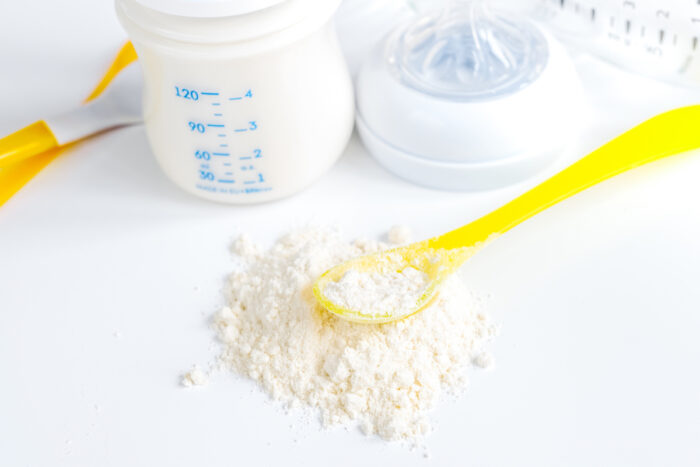
For both liquid concentrate or powder formula, you need to add water. Water must be from a safe source. If you are concerned about your water quality, talk to your water provider.
For formula preparation, bring tap water to a rolling boil and then let it cool to room temperature. Boiling should be no longer than one minute, and after cooling it should be used within thirty minutes. Measure and put the amount of water needed in the clean bottle. Usually, the amount of water needed is printed on the container. Too much water may keep the baby from getting the needed nutrition, and too little water may cause your baby to become dehydrated.
Mix Formula with Water
For liquid concentrate formula, pour the amount of water needed into the clean bottle, then measure and add concentrated formula. Attach the nipple and the cap to the bottle and shake to mix.
For powdered formula, determine the amount of formula you want to prepare. Following the instructions on the package, measure the amount of water needed and add it to the bottle. Add the number of recommended scoops of formula (on the package). Attach the nipple and the cap and shake thoroughly.
Make sure that the water/milk is not too hot before giving it to the baby. The easiest way to test temperature is to shake a few drops on the inside of your wrist. The formula should be lukewarm, not hot.
Warming the Formula
It is Okay to feed a baby at room temperature and even cold formula. The formula may be reheated if the baby likes it warm. Warm a formula-filled bottle in a pot (or bowl) of warm water for a few minutes, or put the bottle under running hot water. Take care in preventing water from entering into the bottle or on the nipple. Again, test the temperature before giving it to the baby.
Do not warm a formula-filled bottle in the microwave. The formula might heat unevenly, resulting in hot spots that can burn the baby’s mouth.
Storing the Formula
If a prepared bottle of formula is left out at room temperature, it can get spoiled. Prepared infant formulas need to be used within two hours of preparation and one hour from the beginning of feeding. Throw out any formula left in the bottle.
There are different rules for storing different types of formulas. Any remaining portion from a freshly opened container of ready-to-use formula can be refrigerated. Discard any leftover formula if it is in the refrigerator for more than 48 hours.
If you prepare several bottles of liquid concentrate or powder formula, refrigerate the other bottles until you need them. However, after 24 hours discard any prepared formula from the refrigerator.
Store unopened infant formula containers in a cool and dry place. Close the lid of open containers tightly for storage. Do not refrigerate the container. A container of powder formula should be discarded after 30 days from opening. Write the date of opening on the lid to help you remember.
Infant Formula: Some Information
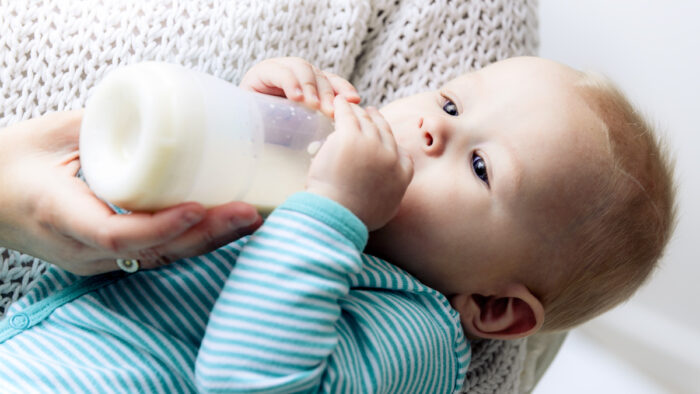
You may have decided to feed formula to your baby from the start, want to supplement your breast milk with formula, or are switching from breastmilk to formula, you are sure to need some clarification. To assist you with the answers, we have looked into guidelines issued by various national and international agencies and tips of pediatric nutritional professionals. This information will help you decide about formula feeding. Learn more about the best choice for a baby formula at pickyeaterblog.com.
Forms and Types of Infant Formula
Baby formulas come in three different forms.
Ready to Feed, Ready to use, or Premade: This type of formula requires no mixing with water for feeding. It is also the most expensive. You can keep a few cans for those moments when you do not have time or energy to mix another bottle. Once opened, it needs to be finished or discarded after 48 hours of refrigeration.
Liquid Concentrate: This type of formula must be mixed at an equal ratio with water before feeding. It is easy to prepare, but also expensive.
Powdered: It is easy to transport and store, you can mix as much as you need, and it is the cheapest. However, it takes longer to prepare. It is important to read the label, as different formulas are mixed at different ratios.
The basic four types of baby formula available in the market are:
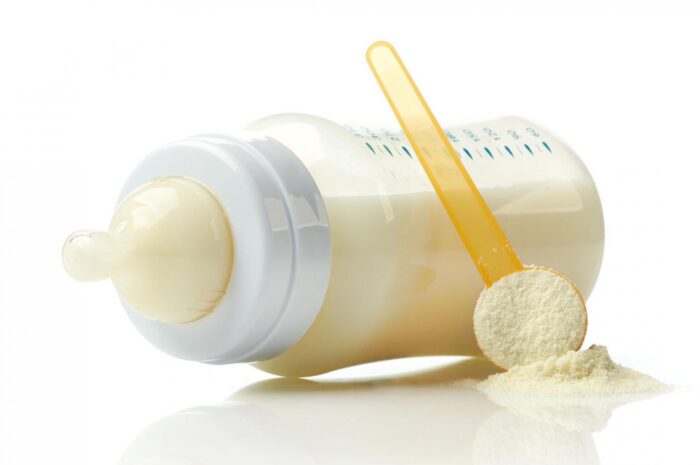
- Cow’s Milk-based Formula: Most formulas belong to this category. Cow’s milk is modified to resemble the composition of breast milk, so it has the right balance of nutrients and is easily digestible. Most babies without special medical conditions can adapt well to this formula.
- Soy-based formula: There is no animal protein or lactose in these formulas. It is an option for babies with lactose intolerance. However, there are potential adverse effects, and it is advised that you contact your pediatrician or doctor before initiating soy-based formula for your baby.
- Specialized formulas: These are for babies with milk allergies or specific medical conditions, and you need to seek medical advice before giving it to the baby. There are many special formulas including hydrolyzed protein and amino acid-based formulas. These formulas are generally more expensive, especially amino acid-based ones.
- Goat Milk: Goat milk or goat milk-based formulas can be an option for babies with cow’s milk sensitivity. However, replacing cow’s milk formula with goat milk formula should be discussed and supervised by a pediatrician, especially if the baby has an allergy.
Expiration Date
On the formula container, look for expiry or “use by” date. This is the date on which the manufacturer assures the formula’s nutritional content and quality. After the expiry date, the formula’s quality degrades and should be discarded. Avoid purchasing or using obsolete infant formulae.
Read the Label
It is important to read the label on the formula container/package. This will give you specific information for preparing and diluting the formula and direction for storing, as well as tips for safe handling.
Store Brand Formulas
There are many store-brand versions of baby formula with similar quality and content as the brand-name formulas. The store-brand also follows the guidelines set by the FDA in manufacturing their formulas. Studies have found that store brand versions are also well tolerated by babies and are considerably cheaper than national brands.
Last Words
Manufactured infant or baby formulas are the only suitable and safe alternative to breastmilk. These formulas are solely developed to contain all necessary ingredients required to comply with the nutritional requirements of an infant. Not only do you need to make a careful choice of the formula for your baby, but you also need to be equally careful when you prepare and store them, as they can easily get contaminated with bacteria.
References:








